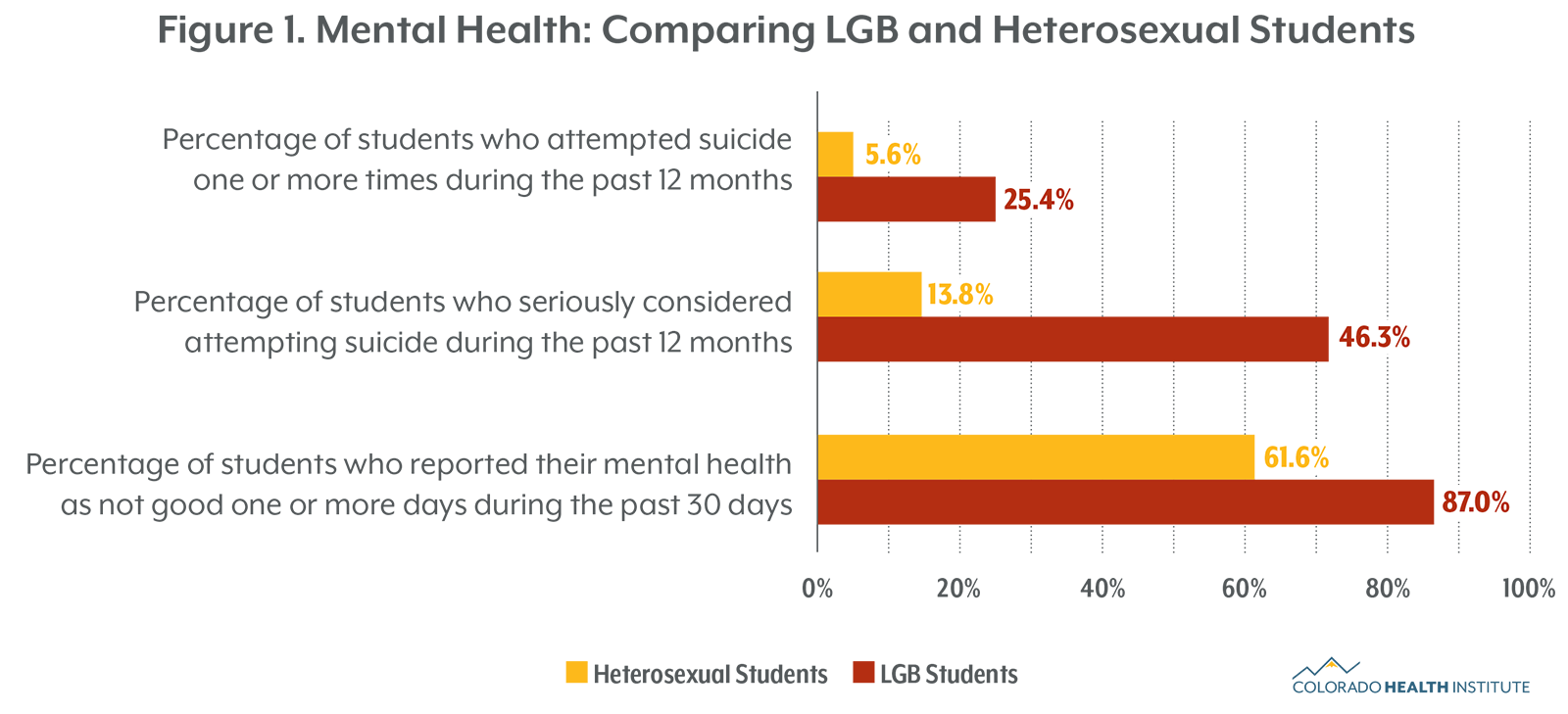Lesbian, gay and bisexual (LGB) high schoolers in Colorado trail their heterosexual peers in seven important indicators of health: mental health; weight, nutrition and physical activity; bullying and violence; general safety; drug and alcohol use; health care; and school engagement.
That’s according to the 2015 Healthy Kids Colorado Survey.
The three categories with the widest disparities between LGB and heterosexual high school students are mental health; bullying and violence; and drug and alcohol use, according to an analysis by the Colorado Health Institute (CHI).
We’ll start with a deeper analysis of those three indicators, beginning with mental health.
The survey finds that 87 percent of LGB kids view their mental health as not good compared with 61.6 percent of heterosexual kids. The proportion of LGB students who have seriously considered suicide — 46.3 percent – is more than three times higher than the 13.8 percent of heterosexual students who seriously considered suicide. And the percentage of LGB students who attempted suicide is five times higher than heterosexual students. (See Figure 1.)

Second, when it comes to bullying and violence, LGB students said they were bullied almost twice as much as heterosexual students. Just over 30 percent LGB students said they were in a fight at least once in the previous year, while less than 20 percent of heterosexual students said the same. The percentage of LGB students that reported being bullied for their perceived sexual orientation was 35.6 compared with 5.5 percent for heterosexual students.
Third, LGB students are more likely to consume alcohol and drugs. Nearly 44 percent of LGB students said they had at least one alcoholic drink in the previous month compared with 28.6 percent of heterosexual students. Almost 10 percent of LGB students have used cocaine compared with less than five percent of heterosexual students. And just under one fourth of LGB students said they’ve used prescription drugs without a doctor’s note compared with 11.8 percent of heterosexual students
LGB students are also more likely to use drugs such as heroin, cocaine, ecstasy, or methamphetamines, according to the survey. (See Figure 2.)

Here are the findings for the four other categories in which LGB students fare worse than heterosexual students:
- 28.1 percent of LGB students were categorized as obese or overweight, eight percentage points higher than the 20 percent of heterosexual students in this category. LGB kids also reported being less physically active, and ate breakfast and lunch fewer times than heterosexual students.
- LGB students were less likely to take safety precautions like wearing bicycle helmets or using seat belts and they were also more likely to be in cars while the driver was under the influence of alcohol or marijuana.
- About two of three LGB students (62.3 percent) said they went to the doctor in the past year compared with three of four heterosexual students (73.7 percent.) Fewer LGB students said their grades were As and Bs, and they also skipped school more often.
The answer for why LGB kids are experiencing worse health outcomes than their heterosexual peers is complicated. Some scientific articles suggest that lack of family support or even familial rejection can lead to negative health outcomes. Other articles highlight the impact that peer victimization has on the health of LGB kids. Many experts recommend new and holistic approaches to understanding LGB health, recognizing that success will take time. Policy changes that focus on school settings, as well as settings beyond schools, should be considered as part of efforts to improve the health of LGB kids, experts add.
As National LGBT Pride Month ends, it is important to take notice of the young members of our LGB community and address the health challenges they face.



